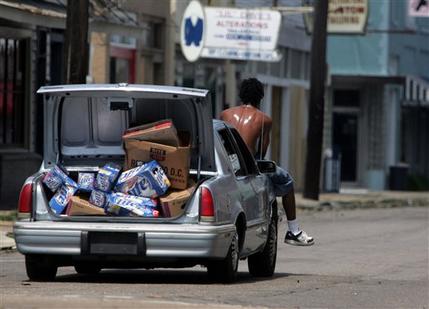I am voting for the Dallas strong mayor proposition.
The current system gives the mayor little power, reserving most real powers to 14 city councilmen. Many of these city councilmen have a simple mission: lord over their fiefdoms (districts), obstruct everything but their pet causes, and screw the rest of the city. James Fantroy is a poster child for this kind of selfish idiocy. Examples like Fantroy are why Dallas has lost its way, and their constant obstructionism blocks realistic reforms or real leadership.
Like it or not, as long as we have a weak mayor, Dallas City Council will always be a cesspit of dissent, incapable of leading the city in any comprehensive, productive endeavor.
The only way to get around this is to strip city council and the city manager of many of their powers and give them to an accountable, elected strong mayor. A strong mayor is what we need to lead Dallas out of its mess.
Some people are critical of the strong mayor proposal:
Criticism 1: Provisions contradict state law. That doesn’t matter. When municipal code conflicts with state law, the state law simply overrides. That’s why state-set 60 MPH urban freeway speed limits override the City Council’s attempt to set 55 MPH speed limits back in 1996.
Criticism 2: It concentrates too much power into one position. First, strong mayors reign in most large cities. Sure, sometimes you get corruption. But choose your poison—occasional corruption or constant deadlock. I’ll choose corruption. Corruption is illegal, prosecutable, and stoppable; deadlock isn’t. Second, if necessary, powers of the mayor can be changed by future referendums. Third, look at this list of major changes. Most of the revised “paths to taking an action” still appear to require city council confirmation. These changes hardly make Dallas unusual.
Criticism 3: The strong mayor proposal illegally dilutes minority representation by overturning 14-1. 14-1 remains intact. This logic is flawed; for it to be true, you would have to argue that strong mayor systems have sufficient minority representation unless the system is in north central Texas. Huh?
Criticism 4: The strong mayor system will cost Dallas millions of dollars defending lawsuits. So be it. If a few millions is the only financial hurdle to get the city’s government back on track, I’ll gladly support it.
Criticism 5: The proposal was drafted in secret by a bunch of eeeeeeeevil people who don’t live in Dallas. Even if it’s true, that doesn’t automatically mean it’s a bad thing. The Dallas at the Tipping Point report was drafted in secret by people who don’t live in Dallas. Does that make it worthless or somehow counterproductive? Back in 1995, the measure to repeal federal speed limit controls was drafted outside public scrutiny by people who don’t live in Texas. Does that make it evil? Outsiders can’t enact propositions. Dallas voters must approve this measure.
Dallas needs a strong leader, and it makes sense for this leader to be a strong mayor. Join me in voting “yes” on the strong mayor proposition this May.
At this point, the only thing that will change my vote is if someone can show that this proposition makes Dallas radically different than other vibrant, successful, strong mayor cities. Barring that, I am definitely voting yes on the strong mayor proposition.

